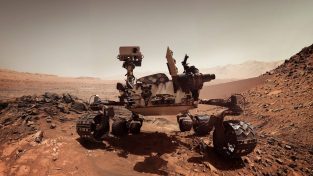For Sustainability Day 2022, we asked Maria Luthström, president of Hexagon’s Autonomy & Positioning division, to share her thoughts on how assured positioning, navigation and timing (APNT) work together to empower sustainability.
It’s no secret that we must make necessary changes to ensure the world is more sustainable. The good news is that technology can enable us to do this. Autonomy — whether used to guide vehicles or control machinery — can be one of the most effective tools for creating a sustainable future.
When it comes to ensuring that autonomous systems are safe, assured positioning, navigation and timing measurements are vital.
The role of assured positioning, navigation and timing
Positioning, navigation and timing are outputs from global navigation satellite systems (GNSS). These systems drive a number of services we rely on in our day-to-day lives — such as getting directions via Google Maps — and are critical for powering safe autonomous systems.
Hexagon’s Autonomy & Positioning division has a long history of delivering assured positioning, navigation and timing (APNT) technology that is used across industries. For example, the Federal Aviation Administration uses a satellite-based augmentation system leveraging our assured positioning solutions during flight take-off and landing across the United States.
Let’s start by explaining what these terms mean. Positioning quite simply refers to where you are on a map. This is often augmented by other sensors to ensure the position is correct. Navigation determines where you’re moving — so if you’re travelling from one location to another, we know your speed and direction.
For timing, we provide a very accurate time stamp through our systems — accurate enough that you can stamp bank transactions or other critical events. You can also use timing to synchronise output from your other sensors so when you process the data later, it all fits together seamlessly.
Assured takes all this one level further, as it means the positioning, navigation and timing output of the system has been critically evaluated. In the event of cyberattacks or interference with the system, we can detect any potential abnormalities and alert the user their outputs may be at risk.
Autonomy must be safe to be trustworthy, which requires assured positioning, navigation and timing. With APNT , autonomy can reliably work to improve sustainability.
Empowering an autonomous, sustainable future
Ask a group of people to describe what autonomy looks like and many will respond with “driverless cars.” While that hasn’t become a reality yet, autonomy is being used in many other industries today. Mining, agriculture and construction are all areas where autonomy drives positive impact.
One of the key benefits of autonomous systems is that they allow stakeholders in these industries to have more control over inputs. Agriculture is a great example — with automation, farms can control the use of chemicals or fuel in food production for improved sustainability. Assured positioning, navigation and timing for machine controls and the fusion of multiple sensors also enables autonomous systems, demonstrating that APNT can increase capacity, improve yields and lower costs.
Autonomy can also help us eliminate hazardous jobs that put workers at risk. For example, mining ore in the remote areas of western Australia means relying on large road trains travelling on dirt roads for long hours to transport ore to port. By implementing an autonomous system with APNT on their transport vehicles – a system that also interacts with the automated processes of the mine itself – drivers won’t be placed at risk on these dangerous roads.
Demands for sustainability within industry will only continue to increase — if you don’t put a focus on it today, it could impact you down the line. I advise any organisation to look for the business and growth opportunities you can create by helping your customer be more sustainable.
Not everything can be solved with autonomy, but autonomy is one factor helping us produce a more sustainable future. And assured positioning, navigation and timing are vital in this pursuit.



















